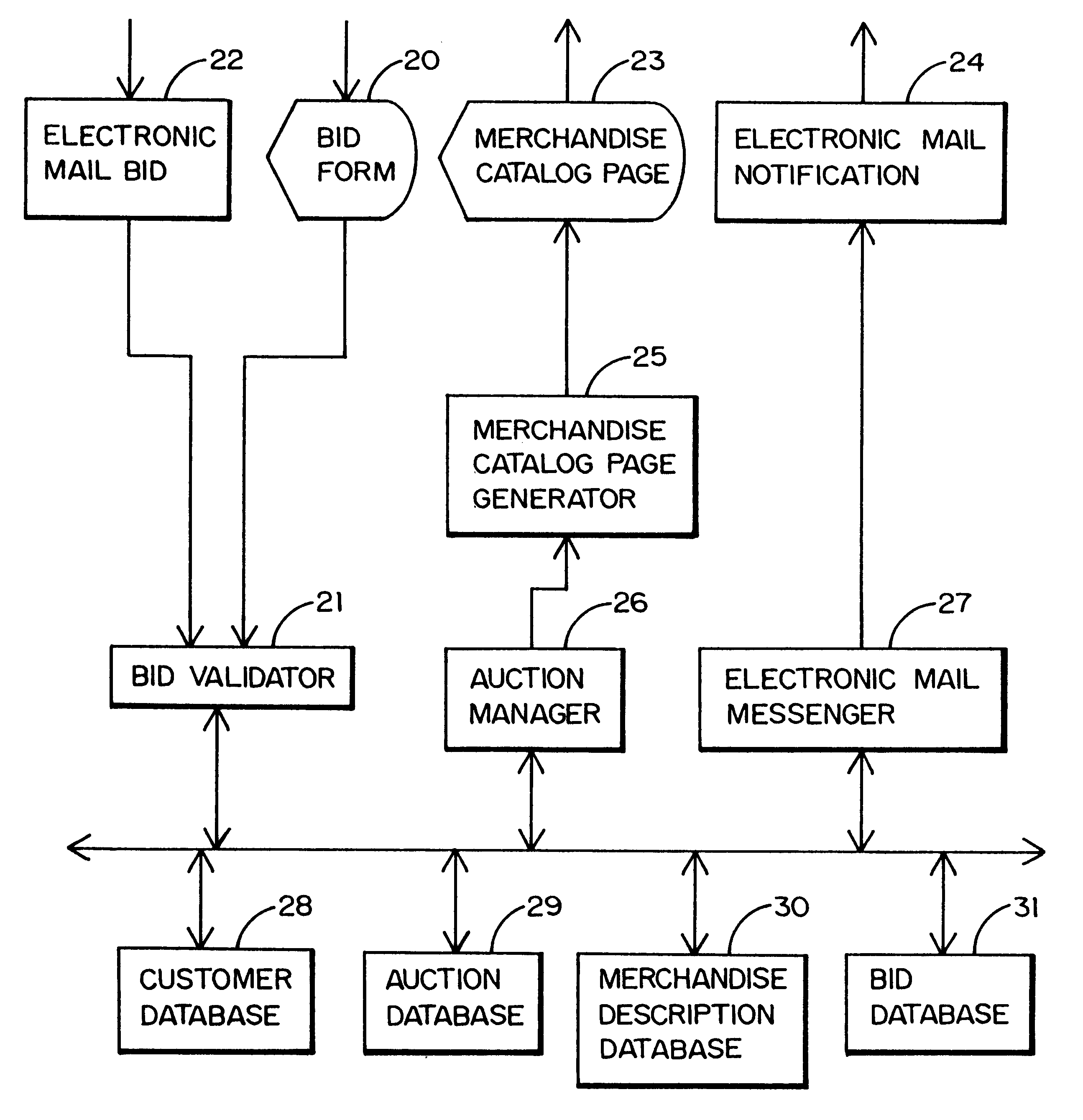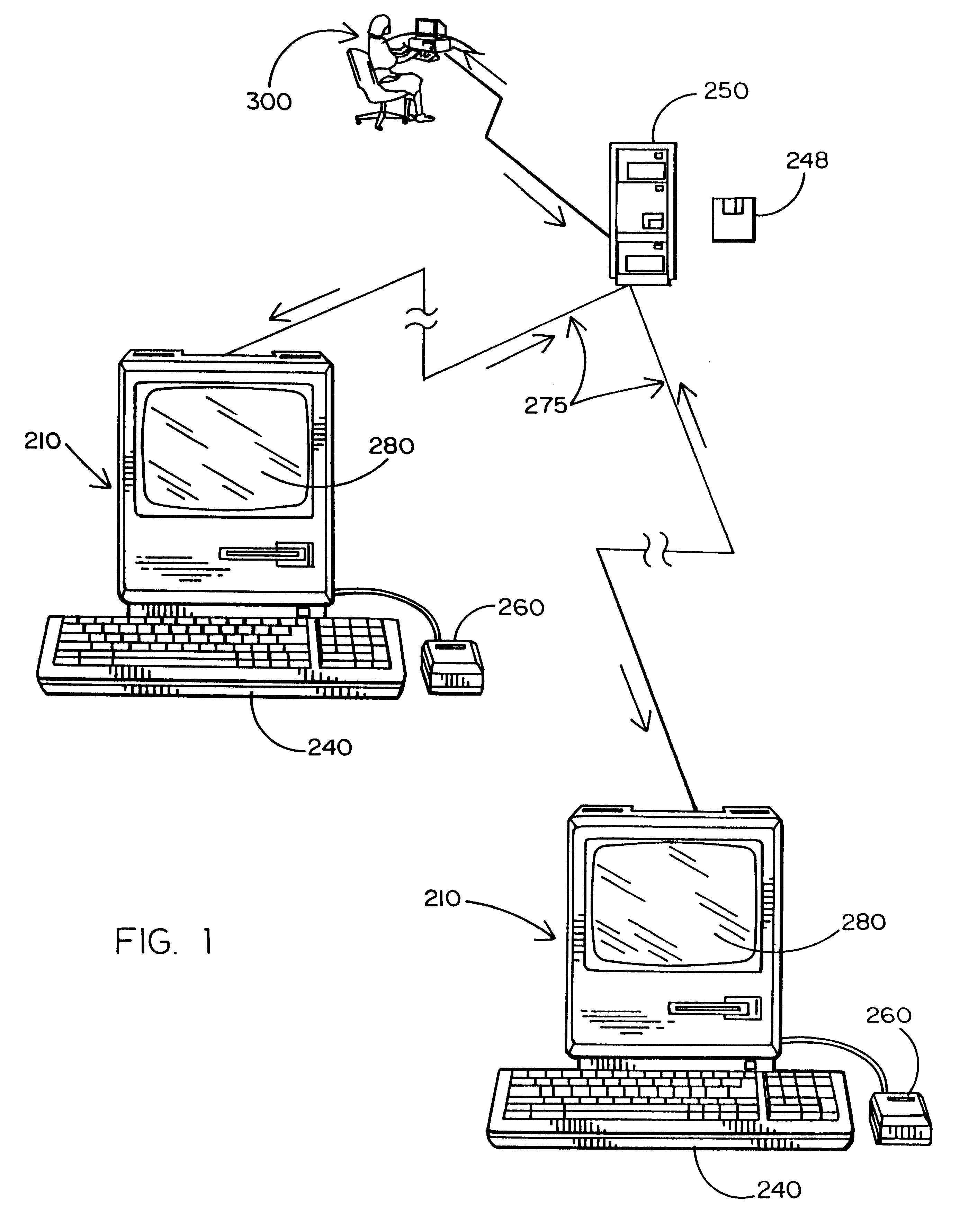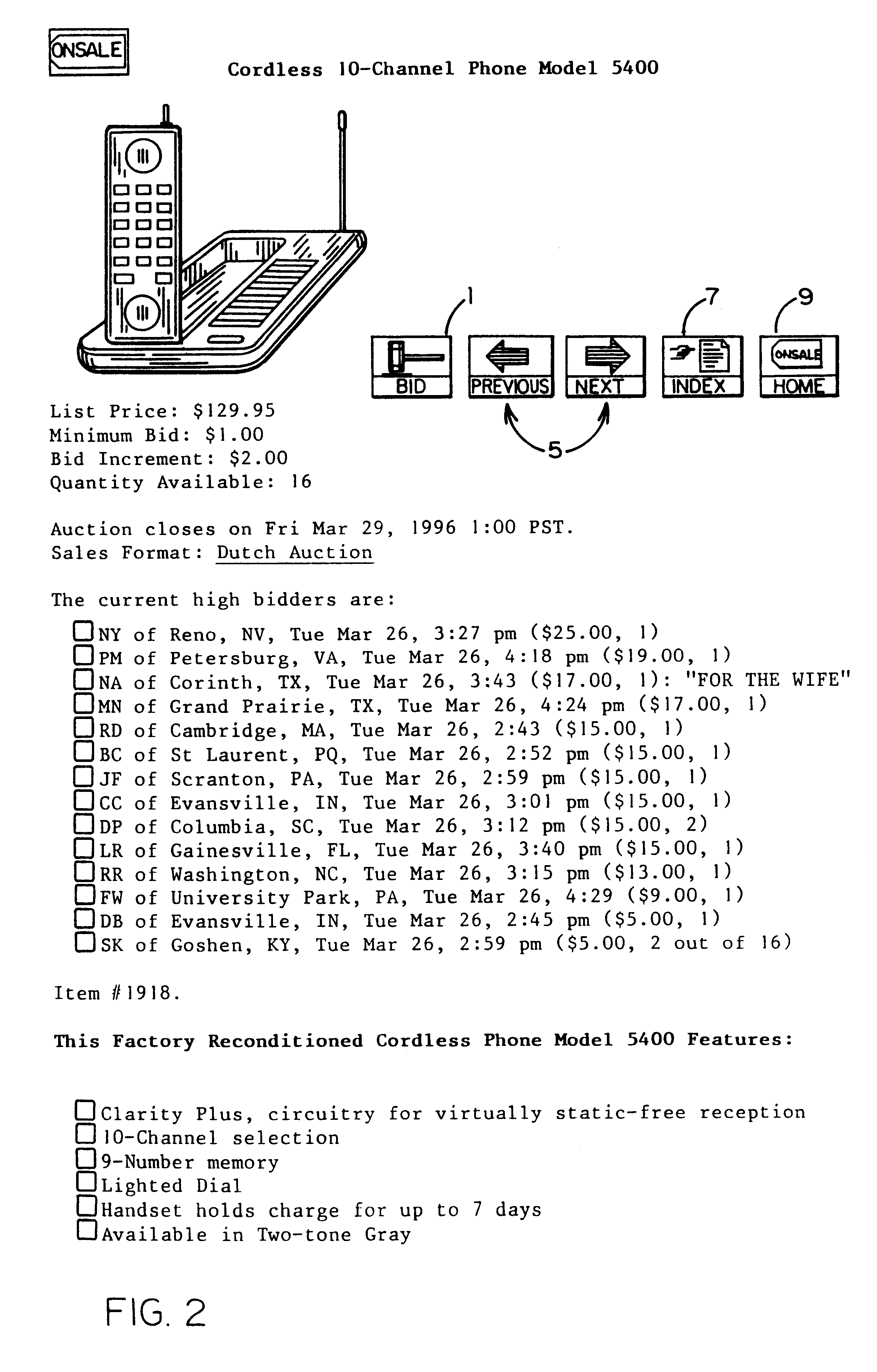Method and system for processing and transmitting electronic auction information
a technology of electronic auction and information processing, applied in the field of electronic commerce, can solve the problems of inherently limited sequential processing, physical auctions have the further disadvantage of only one item at a time, and save time and travel expenses, and achieve the effect of saving time and travel expenses
- Summary
- Abstract
- Description
- Claims
- Application Information
AI Technical Summary
Benefits of technology
Problems solved by technology
Method used
Image
Examples
Embodiment Construction
An inventive method and system is disclosed for conducting a multi-bidder, interactive auction without using a human auctioneer to conduct the auction. Preferably implemented in software, the electronic auction system allows a group of bidders to interactively place bids over a computer or communications network, automatically records the bids, updates the bidders with the current auction status information, closes the auction from further bidding when appropriate, and notifies the winning bidder or bidders and loser or losers as to the auction outcome.
The inventive system includes a database for maintaining descriptions of the merchandise for auction, the bids, and other relevant information in a commercially available database system. Database searches are preferably performed periodically to check for new items to be made visible to potential bidders. Such periodic searching allows an individual charged with maintaining this system to load relevant information into the database a...
PUM
 Login to View More
Login to View More Abstract
Description
Claims
Application Information
 Login to View More
Login to View More - R&D
- Intellectual Property
- Life Sciences
- Materials
- Tech Scout
- Unparalleled Data Quality
- Higher Quality Content
- 60% Fewer Hallucinations
Browse by: Latest US Patents, China's latest patents, Technical Efficacy Thesaurus, Application Domain, Technology Topic, Popular Technical Reports.
© 2025 PatSnap. All rights reserved.Legal|Privacy policy|Modern Slavery Act Transparency Statement|Sitemap|About US| Contact US: help@patsnap.com



